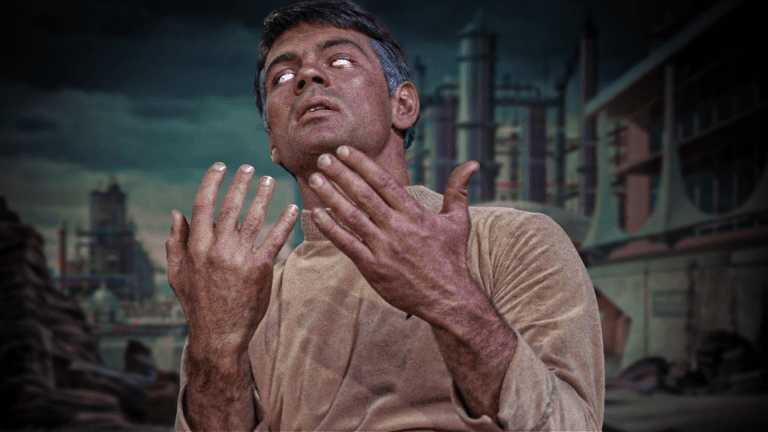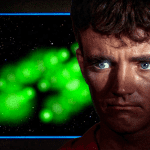“Where No Man Has Gone Before”
Original airdate: 22nd September 1966
Written by: Samuel A. Peeples
Directed by: James Goldstone

In a nutshell: A great sci-fi concept with thought-provoking ideas and plenty of action. “Where No Man Has Gone Before” is Star Trek 101.
“Morals are for men, not gods.”
The Enterprise is severely damaged by a strange energy barrier at the edge of the galaxy. Among the casualties is Lieutenant Commander Gary Mitchell (Gary Lockwood), Captain Kirk’s longtime friend who begins to mutate into a powerful God-like being. Concerned by Mitchell’s powers and his newfound disregard for morality, Kirk is forced to set aside his friendship for the safety of not only his crew, but the entire human race.
Why didn’t they air this one first? Dodgy-collared uniforms and a still proto-Spock aside, Star Trek’s second filmed episode, “Where No Man Has Gone Before” is a much stronger introduction than “The Man Trap”. For one it does a far better job selling the idea of a group of future explorers charting the farthest reaches of space. Its lead, William Shatner’s Captain James R. (just ignore it) Kirk is established more effectively as the kind of hero you’d want to tune in each week for. And it kinda sorta does science too.
I know it’s easy to say this in hindsight, and ultimately it doesn’t matter now, but imagine sitting down in 1966 for the very first episode of Star Trek and watching this. You can never say for sure, but beginnings are crucial. I sometimes enjoy thinking about an alternate universe where the series completed its five-year mission because of the strength of its introduction. This could’ve been it.
Alas, we just have to deal with what actually happened. We can do three things: 1) just watch the episode first, 2) headcanon it as a non-contextual flashback, or 3) consign it to some sort of non-canon alternate reality. That last one’s pretty difficult now thanks to Lower Decks, where Mariner seemingly mentions Gary Mitchell at least once a season.
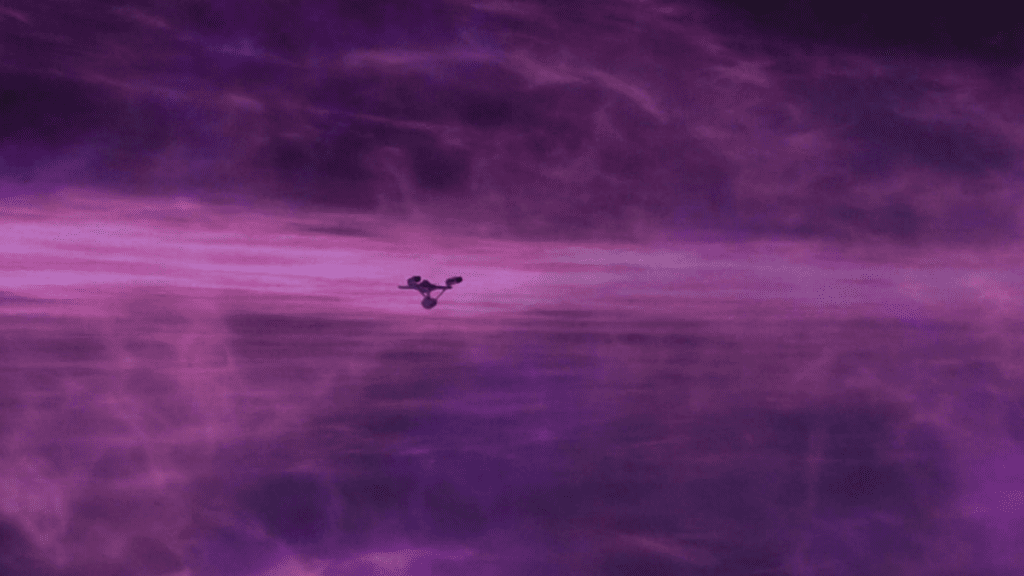

There is a fourth option: just deal with it. Watch it and enjoy. A major reason why this option works so well is Gary Lockwood’s Gary Mitchell, one of Trek’s great “one-and-done” guest characters. From a loyal friend and all-round good human to a monstrous, God-like being corrupted by incomprehensible power, Lockwood’s portrayal hits all the right notes. Mitchell’s dramatic transformation is as fascinating as it is troubling to watch unfold, his playful charm and loving warmth eventually turning callous hard and alien cold.
His physical evolution is also impressive, despite the obvious drawbacks of the makeup effects of the time. Props to Lockwood for enduring what looked like extremely uncomfortable contact lenses to achieve the character’s distinctive otherworldly new look. I also noticed and greatly appreciated the subtle change in hair, Mitchell’s locks slowly turning grey in side-step with his rapidly uncontrollable power. The light that burns twice as bright burns for half as long. I almost want to see the episode remade with modern effects, to fully showcase what physical damage this kind of unnatural power could do to a human body. Someone get David Cronenberg on the line.
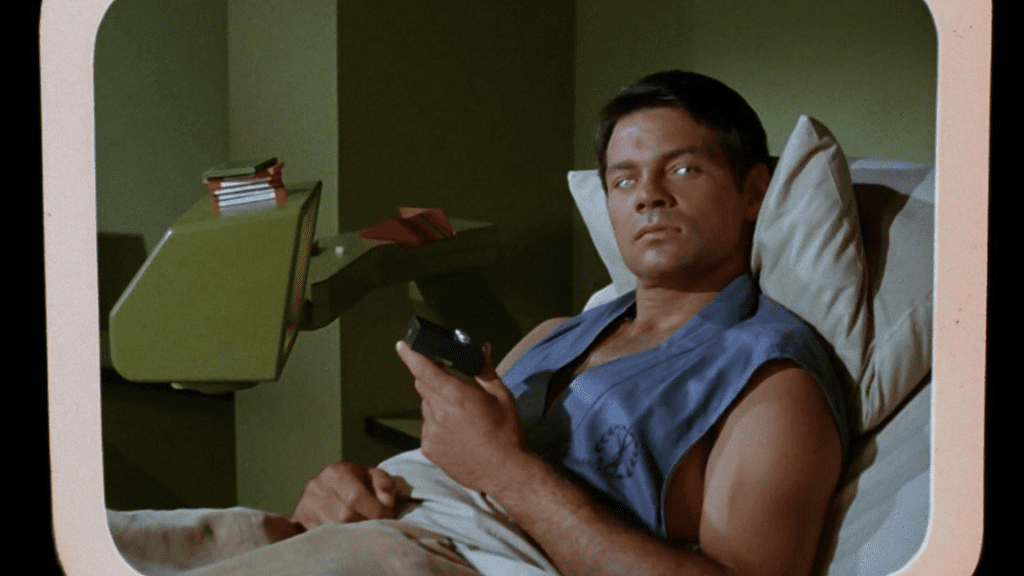

Mitchell’s transformation stimulates provocative drama centred around tough decisions and a conflict of ideology. Shatner is excellent in his maiden outing as Kirk, a man torn between friendship and a Captain’s obligation to protect his crew. He ultimately makes the right decision, aided by Spock’s ruthless Vulcan pragmatism. Leonard Nimoy’s cold portrayal, a diametric turn from the version previously seen in “The Cage”, was clearly still a work in progress, but it was close enough to the character that would eventually become the show’s breakout attraction.
Lockwood wasn’t the only great guest star. Sally Kellerman is equally as memorable as Doctor Elizabeth Dehner, another unfortunate victim of the energy barrier whose late turn and transformation proves pivotal during the episode’s rocky climax.
Filling the female void left by Majel Barrett’s Number One, a rejected character from the first pilot, Kellerman’s arc plays out as the “ying” to Mitchell’s demented “yang”. Introduced as a cold “walking freezer unit” (as Mitchell crudely put it), Dehner’s eventual transformation and ultimate sacrifice sees her become more open to her humanity by the end. It’s a curiously under-analysed aspect of the show.
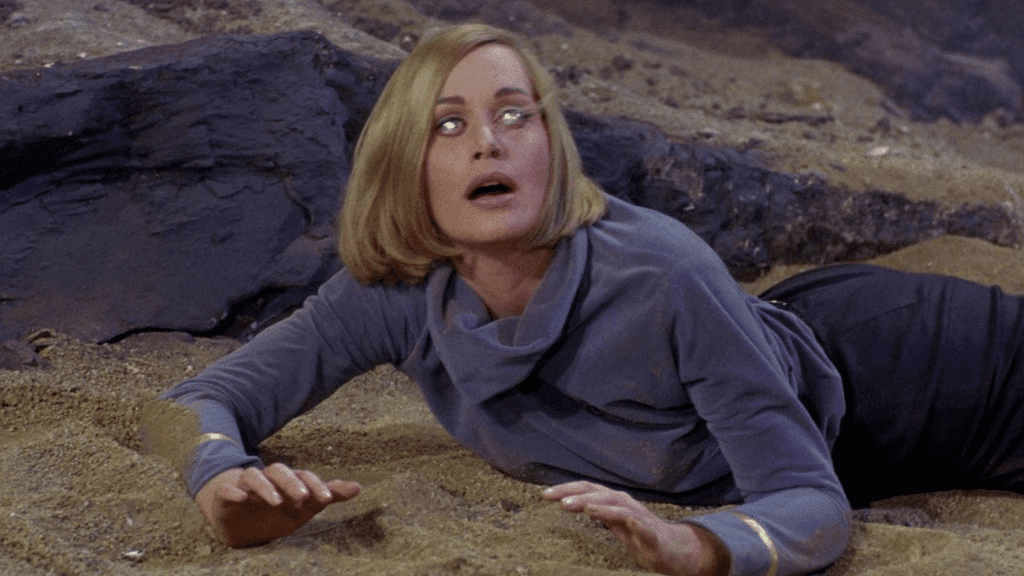

But really, when it comes to the crunch, who cares about morality and psychoanalytical gobbledygook? “Where No Man Has Gone Before” delivers brains in spades, but it doesn’t skimp on the action. With all options exhausted and Mitchell seemingly too far gone, Kirk switches tact, engaging his former best friend in a brutal fight to the death. When all else fails, hit ‘em with a rock I guess*.
It’s brief, high-octane and completely over-the-top fight sequence with the two men’s obvious stunt doubles clearly having way too much throwing each other around the rocks and sand of Delta Vega. Can I describe a desperate fight to the death as “a lot of fun”? I’m gonna. It sets the bar for the quintessential Trek fight scene, ripped uniform and all. It’s silly, sure, but somehow it never undermines the drama, and the inevitable tragedy of its conclusion.
Was Mitchell defeated too easily? Probably yes. He’d demonstrated such power the idea of simply moving a rock should’ve been relatively easy. It’s a development that requires a leap on the viewer’s part, but when the rest of the episode is so good it’s easy to let something like this go.
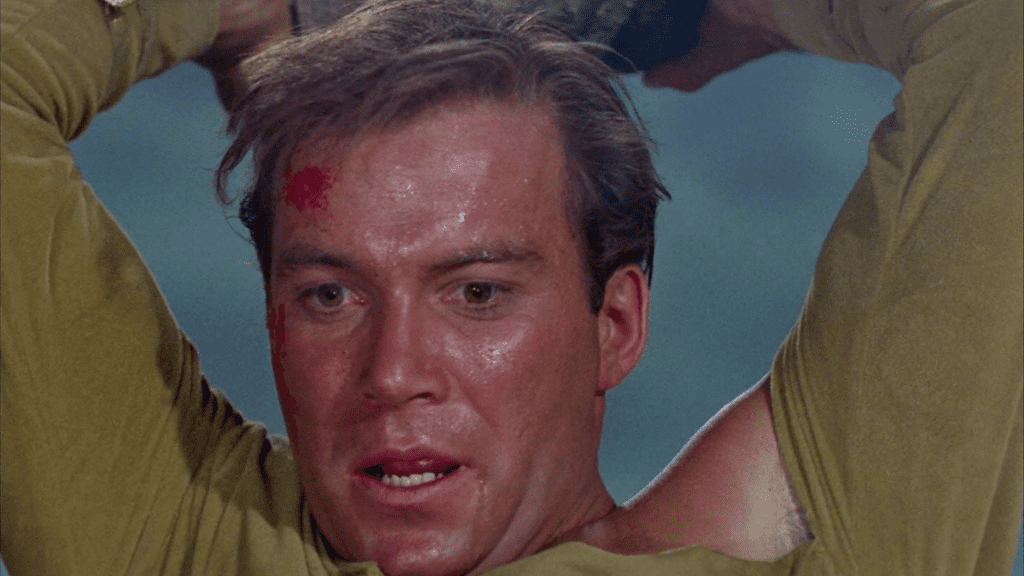

With all due respect to Star Trek’s original pilot, “Where No Man Has Gone Before” is the superior first episode. It’s a show that has all the classic Trekkian elements we love: exploration – both of space and the messy stuff that makes us human – sci-fi concepts grounded in science rather than fantasy, danger and intergalactic stakes, and, of course, explosions and a big ol’ fight at the end. It’s an excellent early episode that for a long time has been my go-to recommendation for anyone interested in getting into Star Trek, but unsure of where to start.
*don’t actually do this, please.

